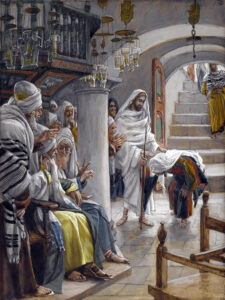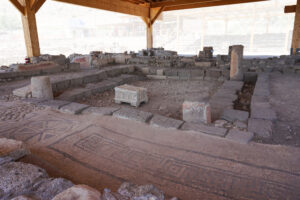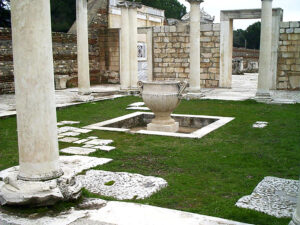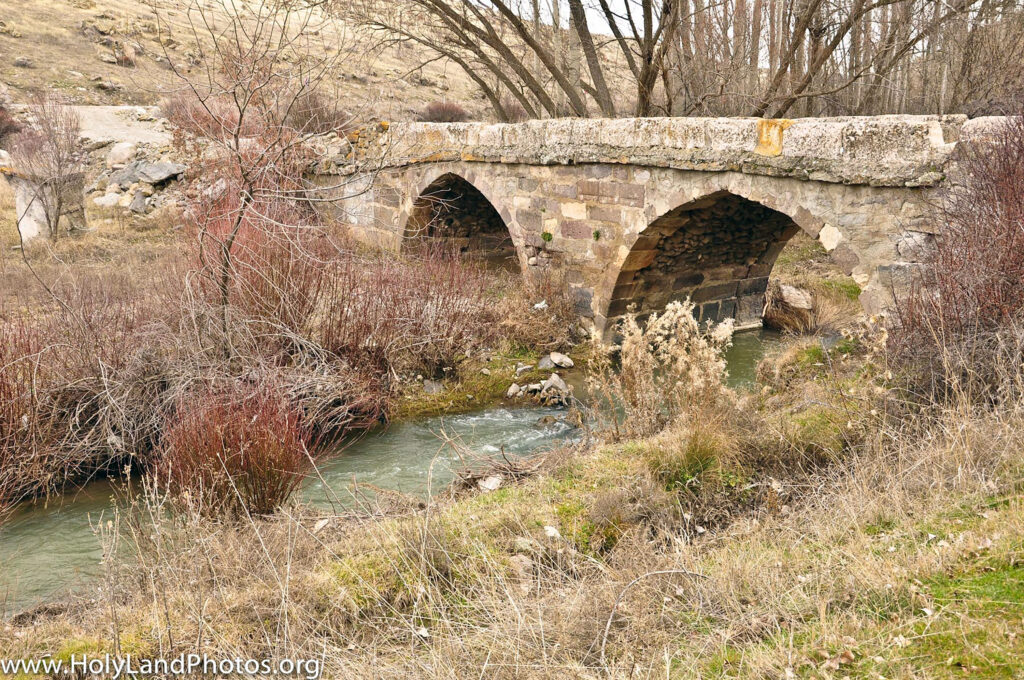By Dr. Don Bierle, FaithSearch President
Beginning with Abraham, God chose the Jewish people to be a separated and divinely prepared people – His witnesses and blessing to the nations (see Genesis 12ff.). Furthermore, God gave Old Testament Scripture which prophesied the coming of a Messiah who would atone for the sins of all people. Rather than extend the hope they had received to the whole world, the Jews viewed God’s offer of salvation in a nationalistic sense. Nonetheless, God was directing history, and whether they intended it or not, He used the Jewish synagogue both as a means to prepare them to anticipate their coming Messiah and as a place for Jesus to proclaim the Gospel of the Kingdom quickly and widely.

Before and during the time of Jesus, to intensify the Jew’s messianic anticipation, God brought persecution to them through Babylon, Antiochus Epiphanes, and finally Rome. Through these persecutions the Jews were scattered throughout the ancient world. At the time of Christ’s birth, fewer than one million Jews resided in Palestine, while over three million were dispersed.
Jesus and the Synagogue
All four Gospels identify the synagogue as intrinsic to Jesus’ ministry. Synagogue buildings featured a main assembly hall with stepped benches lining the walls. Since the synagogue served as both a town hall and a religious institution, this venue was perfect for Jesus to teach and to proclaim His message to entire communities. From the New Testament, we know it was in the synagogue that He: taught (e.g. Matthew 9:35); exorcised demons and healed people (e.g. Luke 13:10-17); and introduced new revelation (e.g. John 6:30-59).

(Image courtesy: holylandphotos.org)
Archaeologists have now discovered sixteen first century A.D. synagogues in Palestine. It is becoming clear that synagogues were everywhere, from small rural villages seating only a small number of people; to large city centers (e.g. Gamala, in the Golan) seating more than 400. The discovery of two synagogues in Magdala indicates the likely presence of multiple synagogues in urban areas. Furthermore, they were beautiful places with colorful frescoed walls, painted columns, and mosaic floors.

(Image courtesy: holylandphotos.org)
The Apostle Paul and the Synagogue
Wherever the Jews were scattered, they built a synagogue(s) in their community. In these, they taught the Old Testament and proclaimed their hope of a coming Messiah.
Zealous about their faith, these dispersed Jews made many converts (proselytes) and “God-fearers” from among the Gentiles in each community where they settled. When the apostle Paul and other disciples of Jesus later went on missionary journeys, they found in every city a prepared place to preach the Gospel (the synagogues) and a prepared bridge within them to the Gentiles.
- Pisidian Antioch: “…on the Sabbath day they went into the synagogue… and when the meeting had broken up, many of the Jews and of the God-fearing proselytes [Gentiles] followed Paul and Barnabas…” (Acts 13:14, 43)
- Athens: “…he [Paul] was reasoning in the synagogue with the Jews and the God-fearing Gentiles…” (Acts 17:17)

In the Fullness of Time
The world into which Jesus came was experiencing a mounting loss of confidence in the ever-expanding roster of Greco-Roman gods and ancient religions. Occultism and magic-workers often trapped people in fear. Broken and hungry hearts could find no satisfaction, though they tried all that Rome and the world could offer. James Stewart expressed the uniqueness of the time in which Jesus came:
Search the pages of history up and down, and in all the tale of the centuries you will not find any generation in which Christ could better have come than just the generation in which He did come.
The apostle Paul summarized God’s preparation of the world very succinctly when he wrote, “But when the fullness of the time came God sent forth His Son…” (Galatians 4:4). Surely the widespread presence of Jewish synagogues throughout the Roman Empire was a part of God’s preparation so that the Good News of His Son would spread like wildfire!

(Image courtesy: holylandphotos.org)
Sources: Biblical Archaeology Review, Spring 2023, Vol 49, No 1, “Jesus in the Synagogue,” pp. 34-41.
Donald Bierle, New Testament History and Survey, Volume One, pp. 1-3.
James Stewart, The Life and Teaching of Jesus Christ (Nashville: Abingdon, 1978), p. 12.
Andrew R. Seager, American Journal of Archaeology, Oct., 1972, Vol. 76, No. 4 “The Building History of the Sardis Synagogue,” pp. 425-435.



